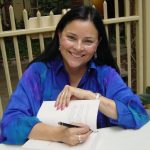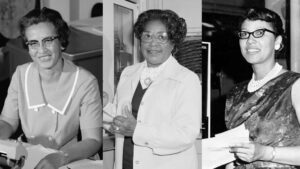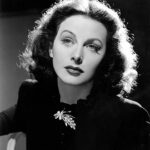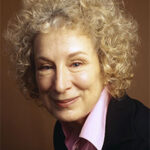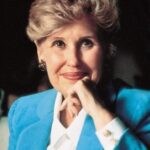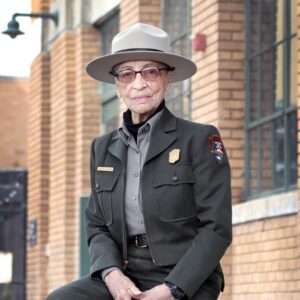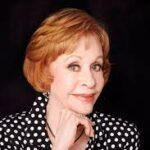Extraordinary
|
Celia West’s Interview of HunterMy name is Celia West. I work as a private contractor for the US government in Washington DC. I’m commissioned by select committees to interview people who’ve played a part in sensitive events. I have no particular skills in military or government procedure. I do have an ability to gauge the veracity of what has already been put in a subject’s reports. Today is the last of three interviews with persons involved in an event that took place in Ecuador. The man I’m interviewing is a Navy SEAL. Interviews with Special Operations men are intense. This interview will be conducted at an undisclosed naval facility. As is my custom, I arrive slightly early. I am led down a long corridor by an armed marine guard and ushered into a room with no windows and subdued lighting. The door closes and a man sitting in one of the large chairs stands causing me to take a step back. He is huge. I’m only 5’ 2” but I’m sure he qualifies as huge to anyone. “Ms. West,” he thrusts out a hand the size a ten-inch iron skillet. “I’m Hunter.” He finishes in a deep baritone voice. I warily slip my hand into his and note his hand also feels like a skillet. “Nice to meet you.” I say, making an effort to smile at him. He releases my hand and says nothing. There is something about this man, a presence, a power, that fills the room. He waits for me to sit then drops back into his chair. The leather chair groans as he shifts and brings an ankle to a knee. I take a moment to note his appearance. Long hair protrudes around the edges of a knit cap pulled low on his forehead. Sunglasses and a long un-kept beard complete the look designed to keep me from ID’ing him. A non-descript polo shirt is stretched over his chest and arms. Well-worn jeans with a tear over the right knee cover his legs. I have the distinct feeling that from behind those glasses he is giving me the same going over. “Is Hunter your first or last name?” “Yes.” he says. “Is it your real name?” “It is today.” Alrighty then. “How do you feel about this interview?” Might as well get right to it. “Feel? Ma’am I was told to come here and answer your questions. I wasn’t told to feel anything.” An evasive answer. “Do you always do what you are told?” “No.” He says quietly. I read truth and a touch of wry humor in the single word. “Did you do what you were told on this mission?” “I was inserted into a situation and told to achieve a certain outcome. How I do that is up to me, the team. If you’re asking did I achieve the outcome, that is an affirmative.” “Admiral Hendrickson said she diverted from the original flight plan because Dr. Walsh asked her to fly back the coast. Do you believe her?” “Yes.” I was taken aback at how quickly he answers. I launch into the next question. “Dr. Walsh said the reason he asked to fly that route was to enjoy the coastline scenery. Do you believe him?” “No ma’am.” The hair around his mouth twitches. This surprises me and I take a moment before I speak to be sure my voice is even. “What do you believe the reason was?” “He wanted some alone time with the admiral.” “What makes you think that?” I give up hiding my surprise. He puts both feet on the floor and leans forward. “You haven’t seen them together.” I can’t decide if it’s a question or a statement. I do know when I interviewed the doctor he displayed a great deal of concern for the admiral. I shake my head. “You in a serious relationship?” His voice is so deep I swear it reverberates around the small room. I’m glad the light is low so he can’t see the color creep over my face. “Mr. Hunter I’m not going to answer that. I’m here to ask you questions and then you can be on your way.” He makes a sound and leans back. “Thought so.” My not answering confirms to him I’m not. I think I hear him say, good, under his breath. “Tell me why you think Dr. Walsh wanted to be alone with the admiral.” “I’ve been in this job nine years. An important part is reading people.” He pauses. “It isn’t all body language. It’s what you say and when you say it. How you look or don’t look at a person. I’m good at what I do and I can tell you without a doubt the doc has it bad for the admiral. ” There is some amusement in his voice. “He’s one of the good guys. The admiral is not only an extraordinary woman, but a classic beauty. Can’t fault him for wanting time with her.” “I see.” Heat rushes over my face. “What is your impression of the admiral?” I try to get the interview under control. “She is upfront. Honest. She gives and asks for a hundred percent.” “She gave an account of killing two men. Can you corroborate what she said?” “Lady,” he says harshly, “you’ve already read my take on the show. You know I saw nothing of the fight Admiral Hendrickson and Dr. Walsh had with the bad guys. I have nothing to add. I can guarantee the admiral answered your questions with the straight up truth.” He starts to rise. “Are we done here?” “No. Sit.” If he thinks he can intimidate me, he is very mistaken. He settles back in the chair. I begin recounting the details of the action and asking questions. Hunter agrees and when he doesn’t, he clarifies. Half way through he says, “You aren’t writing any of this down.” “I have an excellent memory.” He says nothing. “Would you say the job ended successfully?” “No.” “Why not?” I am beyond surprised. The operation netted a billion in counterfeit money, and almost that much in drugs. “I don’t consider coming back short a team member successful.” One of the SEALs, a Lt. Mercer, was gravely injured and died during the op. I understand and give him a nod. “I have what I need. Is there anything you want to add?” Hunter is still and silent for a long while then he shakes his head side to side. “No ma’am.” “Then we’re done.” Strangely, I feel letdown the interview is ending. Before I can gather my briefcase, the door opens and the armed marine appears. “This way Ms. West.” What the hell? “Was this interview being recorded?” I say angrily. I look at both men who remain silent. “It was.” How dare they? “This is not….” “This way Ms. West.” The marine says in a voice that lets me know saying anymore is useless. I sling the briefcase strap over my shoulder, shoot Hunter a vicious look and storm out. And, it doesn’t get any better. Outside I discover the afternoon sky has opened up depositing torrents of rain that are pooling in the parking lot. I check my smart phone for the weather. On the radar, a red blob covers the entire area. I look back at the door but decide I will stand here and wait it out. A black truck, one of those with two rows of seats, rolls to a stop close to the portico cover. The driver’s door opens and a large man dashes around the hood and stops a few feet in front of me. “Can I give you a ride or help you to your car, ma’am?” he says in a deep voice I recognize as Hunter’s. “Hunter?” I say tentatively. He looks nothing like the man I interviewed. His hair and bread are much shorter than the man I saw inside. His clothes neat. He gives me a broad smile. “Santino Lozano, ma’am.” This is most definitely Hunter, sans his disguise, But why is he revealing himself to me. He leans to me. “I like you.” He says as if reading my mind. “I’m offering a ride. Nothing else.” A beard splitting smile slides across his face. “Nothing that is, until after you turn in your report. Then maybe you’ll want to give me a call.” I know my mouth is moving but no sound is coming out. I give him my keys. Our hands touch producing what every romance novel I’d read describes when the handsome hero touches the heroine in the story. Sheer sexual energy. I calculate how many hours it would take to write my reports and turn them in. |

 |
|||||
